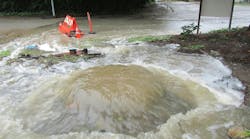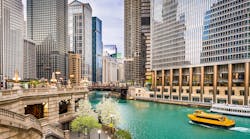About the author: Gregorski is editorial director for Water & Wastes Digest. He can be reached at 847/391-1011 or by e-mail at [email protected].
The Waterkeeper Alliance provides a voice for waterways and their adjacent communities on a global basis to protect and maintain clean water.
Unfortunately, storm water runoff is considered a major source of pollution of rivers, streams and oceans. The Waterkeeper Alliance and its related organizations have come to the forefront in regards to addressing storm water problems.
Storm Water 2006 recently interviewed Steve Fleischli, executive director of the Waterkeeper Alliance, to learn about the organization’s latest efforts involving storm water.
SW06: How did the Waterkeeper Alliance become involved in storm water issues?
Steve Fleischli: Storm water is becoming an increasingly important issue for the Waterkeeper Alliance. It is one of the few water issues that impacts all of our 153 member programs. Every community has to deal with storm water, and it is the No. 1 water quality problem in many parts of the U.S.
The Waterkeeper Alliance is involved in storm water on a national level, via NPDES permitting and regulatory programs, as well as the setting of Effluent Limitation Guidelines.
Many of our member programs have been involved in shaping local storm water programs, either through collaboration or litigation, in all sectors—whether it is municipal, industrial, construction, agricultural storm water or even combined sewer overflows.
SW06: How does the Waterkeeper Alliance view storm water, and what are some of the viable solutions the organization supports?
Fleischli: Storm water runoff can be a huge problem, both because of an increase in the volume of water entering waterways and the additional pollution loading.
Advancements are being made all the time in the area of storm water management. When designing projects, people are beginning to ask important questions like: How has the hydrology and velocity of runoff been addressed? What pollutants are going to be coming off the site? How are we addressing those pollutants?
There are solutions out there. For example, properly installed and maintained media filters may work well for TSS, while infiltration basins and trenches can help control not only water quantity but also nutrients and other pollutants. Many catch basin inserts are great for handling trash. Source control might be one of the best solutions, particularly in the industrial context.
For construction activities, things like silt fences often don’t do enough. A comprehensive approach to structural and non-structural best management practices must be followed. Considering what a site looks like, post construction will go a long way.
At the end of the day, if storm water discharges are meeting water quality standards and are not changing the hydrology of a given waterbody, we’ll be pretty happy.
SW06: How can storm water issues be solved?
Fleischli: There is no “silver bullet,” no “one-size-fits-all” solution; there are no shortcuts. Suck it up. Do the work. It will pay off in the end. SW06: What may be the biggest misconception about storm water?
Fleischli: That it is impossible to deal with and, even if technically possible, it is too costly.
Yet, a lot of smart people spend a lot of time and energy thinking about storm water. If you don’t confront the issues now, you and your children will pay an even greater price down the road. Ignoring the problem will not make it go away; it will only lead to further, more costly problems.
SW06: What advice would you offer to municipalities when it comes to storm water-related issues?
Fleischli: Proper planning in the design phase is the most important component of a good storm water strategy. When you consider new or even existing impervious surfaces, think about how that will impact downstream waterways. Think about it in terms of flood control. Think about the quality of water and its impact on the ecology of the waterway. Think about the cumulative impacts across the watershed.
Also, go out and look at things in the rain. I cannot tell you how many times I have been told during dry weather that everything at a site is fine. Then, when the rain comes, I go back and see what is really happening. Oftentimes, it is a whole different story in the rain.

